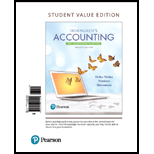
Introduction:
1.
2. Acid-test ratio: The acid test ratio is also known as the quick ratio. It is a
3. Cash ratio: Cash ratio of a company is the ratio of cash and cash equivalents to its current liabilities. As only cash and cash equivalents are compared with the current liabilities, it is an extreme liquidity ratio. It assists in measuring the ability of a business to repay its current liabilities by using only its cash and cash equivalents.
4.
5. Day’s sales in receivables: Day’s sales in receivable refer to the amount of money owed by the customers for sales made to them on credit. By dividing the outstanding receivables by the average daily sales value, an estimate for the number of days’ sales in accounts receivable can be achieved.
6. Asset turnover: Asset turnover ratio estimates the value of the sales or revenues of a company generated relative to the value of its assets. The asset turnover ratio generally indicates the efficiency with which a company is using its assets to generate revenues.
7.
To calculate: The Company’s success for the first year of operations by calculating the given ratios.
Want to see the full answer?
Check out a sample textbook solution
Chapter 10 Solutions
Horngren's Accounting: The Managerial Chapters, Student Value Edition (12th Edition)
- Which of the following best describes standard costs? A) Costs used as a budget for a single unit of product B) Costs incurred to produce a product C) Costs based on the average of current market values D) Costs used to compare with competitors' pricesarrow_forwardWhat is the receivables turnover? The days' sales in receivables? Please answer the financial accounting questionarrow_forwardcorrect answer please this account Qarrow_forward

 AccountingAccountingISBN:9781337272094Author:WARREN, Carl S., Reeve, James M., Duchac, Jonathan E.Publisher:Cengage Learning,
AccountingAccountingISBN:9781337272094Author:WARREN, Carl S., Reeve, James M., Duchac, Jonathan E.Publisher:Cengage Learning, Accounting Information SystemsAccountingISBN:9781337619202Author:Hall, James A.Publisher:Cengage Learning,
Accounting Information SystemsAccountingISBN:9781337619202Author:Hall, James A.Publisher:Cengage Learning, Horngren's Cost Accounting: A Managerial Emphasis...AccountingISBN:9780134475585Author:Srikant M. Datar, Madhav V. RajanPublisher:PEARSON
Horngren's Cost Accounting: A Managerial Emphasis...AccountingISBN:9780134475585Author:Srikant M. Datar, Madhav V. RajanPublisher:PEARSON Intermediate AccountingAccountingISBN:9781259722660Author:J. David Spiceland, Mark W. Nelson, Wayne M ThomasPublisher:McGraw-Hill Education
Intermediate AccountingAccountingISBN:9781259722660Author:J. David Spiceland, Mark W. Nelson, Wayne M ThomasPublisher:McGraw-Hill Education Financial and Managerial AccountingAccountingISBN:9781259726705Author:John J Wild, Ken W. Shaw, Barbara Chiappetta Fundamental Accounting PrinciplesPublisher:McGraw-Hill Education
Financial and Managerial AccountingAccountingISBN:9781259726705Author:John J Wild, Ken W. Shaw, Barbara Chiappetta Fundamental Accounting PrinciplesPublisher:McGraw-Hill Education





